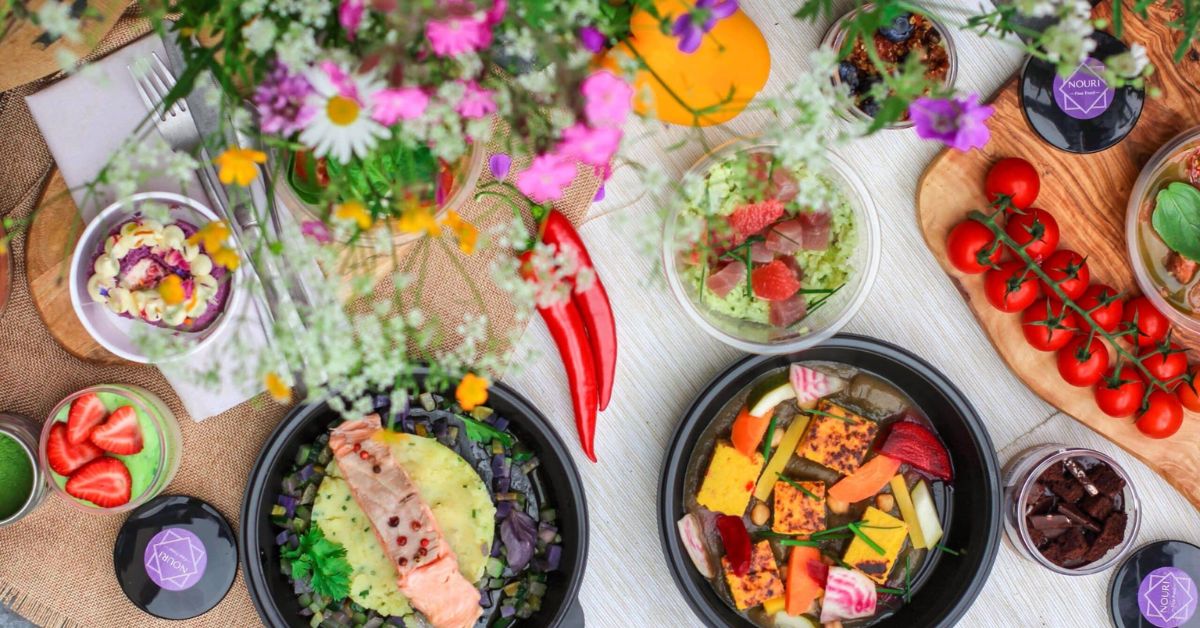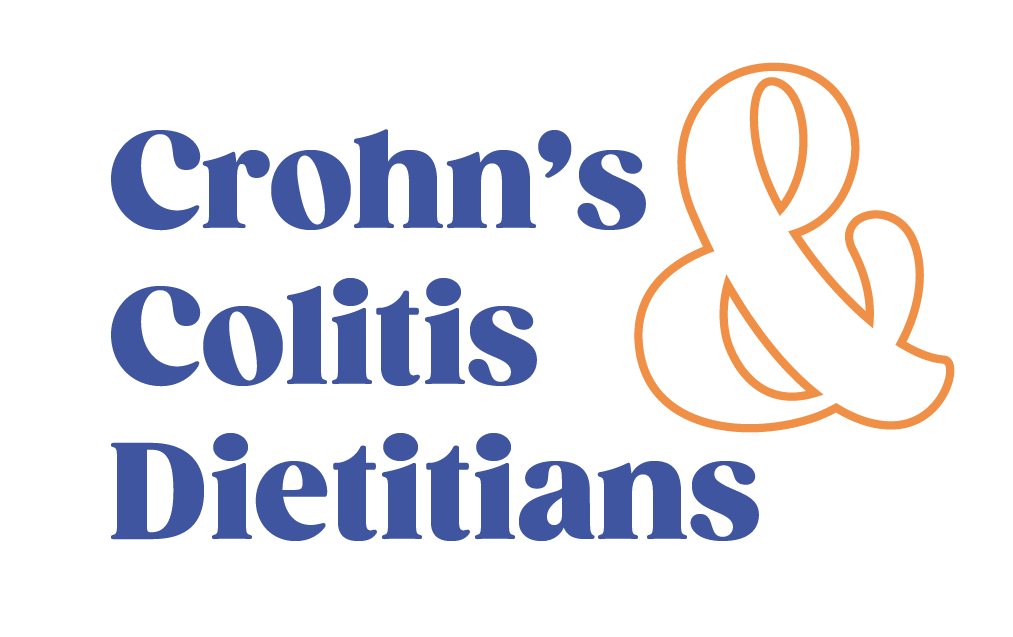Nutrition for IBD can be confusing at times. We understand that we need it, but do we know how or why? Nourishing your body with proper nutrition which will be demonstrated in this ‘Eating the Rainbow for IBD’ blog, while having IBD is something that needs to be individualized according to that person’s needs and their disease state.
Proper nutrition for IBD involves nutrient consumption that include antioxidants, phytochemicals, and phytonutrients coming from our colorful foods. It also includes meeting our nutritional needs through foods and keeping our bodies well-nourished.
Eating the rainbow for your IBD focuses on specific nutrients that can help lower the risk of a flare-up, help meet your nutritional needs, and provide us with the essential nutrients to fight inflammation along with your medications. Together, this can help with adapting to a healthier lifestyle and improve quality of life.
As you may know already, colorful fruits and vegetables contain fiber which is an important factor when it comes to maintaining good microbial health. While a low-residue diet can be a common recommendation by your GI, it is important to not stay on it for too long.
This post will explain what eating the rainbow truly means for you and why we encourage you to incorporate these nutrients into your diet. We will also talk about how you can start incorporating these colors into your meals and modify their textures as needed.
Eating the Rainbow with IBD
You may be wondering what it means to eat the rainbow. Eating the rainbow means including the most colorful foods to your plate. Examples include foods that are red like tomatoes or red peppers. Or including foods that are purple like cabbage or purple cauliflower.
Other foods that can be consumed when eating the rainbow include sweet potatoes, Brussels sprouts, radishes, blueberries, bananas, oranges, and so forth. These colorful fruits and vegetables have antioxidants and phytochemicals that can help combat inflammation.
Let’s take a closer look at bananas since this is a well-tolerated fruit for most individuals with IBD. Bananas contain vitamin C which is an antioxidant that works even better when paired up with a vitamin E source like avocado.
Sweet potatoes, another well-tolerated starchy vegetable, contain beta-carotene (an antioxidant) which is then converted into vitamin A. Sweet potatoes contain many health-promoting functions, including flavonoids (a type of phytochemical) that is also anti-inflammatory.
Benefits of Eating the Rainbow: How to Eat the Rainbow with IBD
Eating the rainbow can be both beneficial and nutritious for us. We know that consuming a wide variety of plants and whole-foods including fruits, whole grains, nuts, and seeds can reduce the risk of certain diseases like cardiovascular disease, chronic diseases, and can help provide us with anti-inflammatory properties. Consider checking out our ulcerative colitis foods list to explore more beneficial foods that can be helpful for your IBD.
Research has shown that these foods can also strengthen the immune system, decrease the risk of metabolic syndrome, and improve blood pressure. Eating the rainbow can be an easy tool for us to get those important cancer-fighting foods into our diets.
Let’s take a look at how we can eat the rainbow by consuming IBD friendly foods.
IBD friendly Eat the Rainbow Food List (to name a few)
- Blueberries→ Raw, Smoothies, Pureed
- Spinach→ Raw, Smoothies, Steamed/Sauteed (destemming is recommended)
- Yellow Squash→ Cooked/Steamed
- Red Tomatoes→ Cooked, Raw (salads), Salsa, Soups
- Orange→ Raw (peeled), Smoothies
- Purple cabbage→ Cooked well, Raw if tolerated (in smaller quantities)
- Banana→ Raw, Smoothies, With toast
- Sweet Potatoes→ Cooked well, Pureed
- Strawberries→ Raw, Smoothies
- Kiwi→ Raw, Smoothies
- White Potatoes→ Roasted, mashed, baked
Share our ‘Eat the Rainbow’ Food Chart!
We created a Rainbow Food Chart for you to help support your gut health, add variety to your meals, and improve food interest and enjoyment! Download the chart using the form below.

Get our Rainbow Food Chart!
Download the chart here and share it with a friend who could use a little more color on their plate.
What do the different colors of the Rainbow mean?
Red
- Food sources: Tomatoes/tomato sauce, watermelon, red peppers, strawberries, raspberries
- Antioxidants: Lycopene, vitamin C, capsanthin, lutein, and carotenoids
- Nutrients found in foods: vitamin C, folate (B9), potassium
Orange
- Food sources: Oranges, pumpkin, butternut squash, sweet potatoes, yams, carrots, papaya, tangerines
- Antioxidants: Beta-carotene, vitamin C, carotenoids (xanthophylls, cryptoxanthin, carotenes)
- Nutrients found in foods: Folate (B9), potassium, vitamin C, calcium, thiamin (B1)
Yellow
- Food sources: Yellow bell peppers, bananas, pineapples, yellow squash, lemons
- Antioxidants: Beta-carotene, zeaxanthin, vitamin C, lutein, flavonoids, phenolic acid, bromelain, manganese, quercetin, eriocitrin
- Nutrients found in foods: Potassium, Pyridoxine (B6), copper, thiamin (B1), magnesium, riboflavin (B2), iron, phosphorus, pantothenic acid (B5)
Green
- Food sources: Spinach, green peppers, arugula, bok choy
- Antioxidants: Vitamin C, carotenoids, flavonoids
- Nutrients: Folate (B9), vitamin K, vitamin A, calcium, potassium
Blue & Indigo
- Food sources: Blueberries, blue cabbage, blackberries, blue bayou tomatoes, blue carrots
- Antioxidants: Flavonoids, anthocyanins, vitamin C
- Nutrients: vitamin C, vitamin K, manganese
Violet
- Food sources: Eggplant, purple beets, purple potatoes, purple cauliflower, purple grapes, figs, acai berries
- Antioxidants: Nasunin, anthocyanins, vitamin C
- Nutrients: B vitamins, vitamin C, phosphorus, potassium, calcium, copper, vitamin K, folate (B9)
IBD friendly tips to add colors of the rainbow to your plate
- Add 3 different colors to your plate: Think of 3 different colors that are not usually on your plate and consider adding them! An example can be yellow peppers (yellow), radishes (pink), and red (tomatoes).
- Change the texture of your veggies and fruits: If you know you tolerate your veggies and fruits in a softer form such as pureeing or steaming, consider doing so. You can also consume your colorful foods through stir-fry dishes.
- Drink smoothies: Smoothies happen to be a great and convenient way to get in these colorful foods. Mix and match your fruits and veggies. An example can be adding blueberries, mango, and strawberries to your smoothie bowl that already includes spinach and rolled oats!
- When in doubt, add color: Think about what you can add to your plate rather than what to take away. Focus on the fruits and vegetables that you can have and incorporate those into your meals.
Still curious about food and IBD?
If you want to learn more about what different foods can do for you and your IBD and want to learn at your own pace, check out our group program. This program allows you to access modules on everything nutrition and IBD while working as quickly or as slowly as you like! For more information on the program or any others visit the link here.




0 Comments